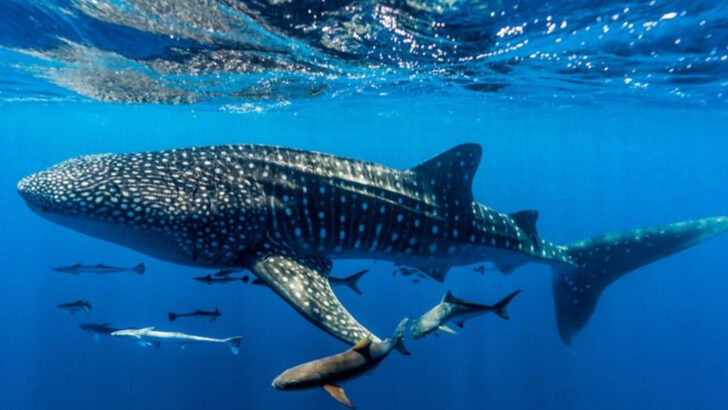Sharks are the ultimate ocean mystery—predators, survivors, and some of the most awe-inspiring creatures lurking beneath the waves. From the legendary Great White to the eerie Frilled Shark, these sea dwellers have evolved in ways that seem almost otherworldly.
Their power and beauty are matched only by their strange, often misunderstood behaviors. Sharks don’t just rule the ocean; they’re living proof of nature’s boundless creativity and adaptability.
These creatures have been swimming in the depths for millions of years, each one unique in form and function. Some are terrifying, others are mind-boggling in their oddities. Let’s take a look at 25 sharks that will leave you questioning everything you thought you knew about the ocean—and maybe even the world itself.
Great White Shark
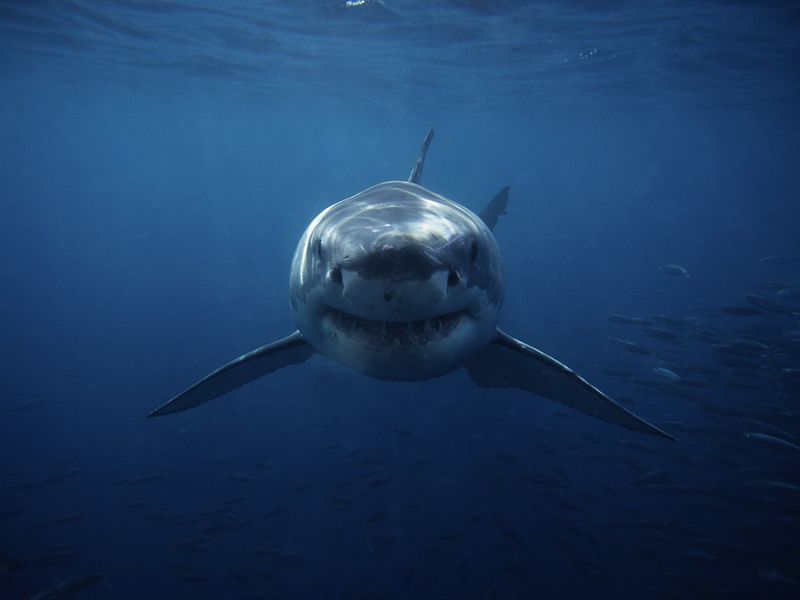
The Great White Shark, known for its size and strength, is a majestic predator of the ocean. With a streamlined body and acute senses, it is an apex predator.
Often found in coastal waters, this shark can grow up to 20 feet. Its diet consists mainly of marine mammals, fish, and seabirds.
Despite its fearsome reputation, the Great White plays a critical role in ocean ecosystems, maintaining the balance of marine life by keeping prey populations in check. Its presence is essential for a healthy, thriving underwater world.
Hammerhead Shark
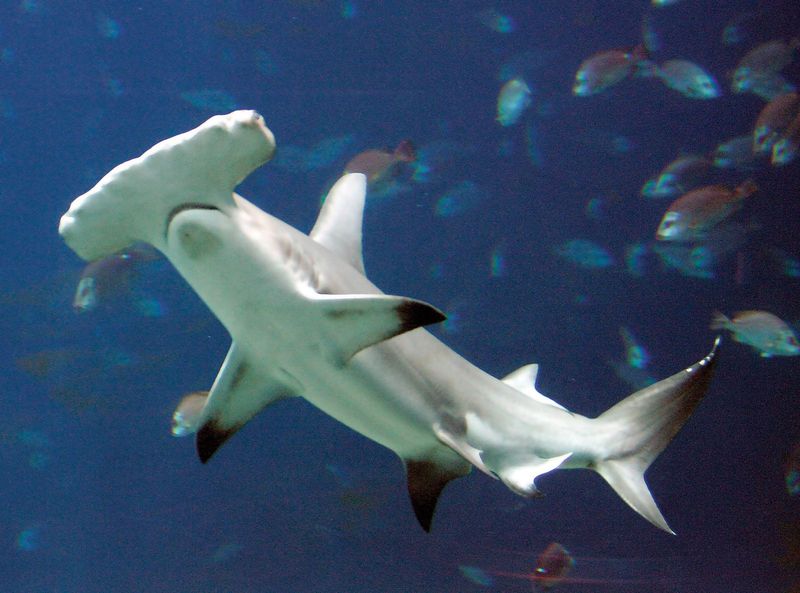
The Hammerhead Shark is easily recognizable by its unique head shape. This adaptation provides enhanced vision and sensory perception.
Found in warm waters, these sharks often swim in schools during the day. Their diet includes fish, cephalopods, and crustaceans.
The Hammerhead’s unusual head allows it to scan the ocean floor more effectively. This makes them formidable hunters. They’re an excellent example of evolutionary adaptation, demonstrating the diverse forms life can take in our oceans.
Whale Shark
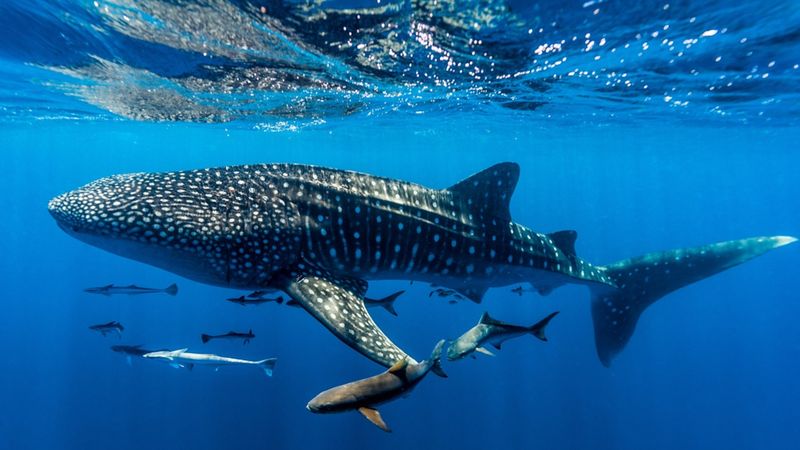
The Whale Shark is the largest fish in the sea, reaching lengths of over 40 feet. Despite its size, it’s a gentle giant.
Feeding primarily on plankton, these sharks use a filter-feeding method similar to baleen whales. Found in tropical waters, they are known for their distinctive white spots and wide mouths.
Their calm nature and impressive size make them popular among divers. Whale Sharks are a testament to the ocean’s ability to surprise and inspire awe, proving that not all giants are to be feared.
Goblin Shark
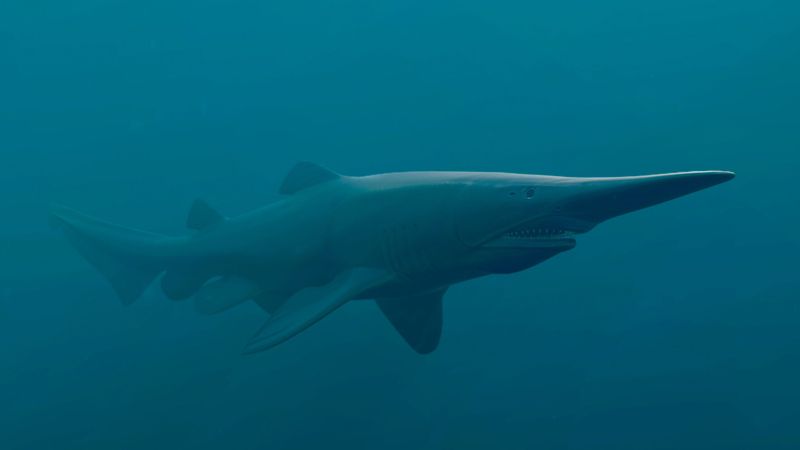
The Goblin Shark is a deep-sea dweller with an eerie appearance. Its long snout and protruding jaws give it a prehistoric look.
Living in depths of up to 4,300 feet, it is rarely seen by humans. Its diet consists of deep-sea fish and crustaceans.
This shark’s unique features help it survive in the dark, high-pressure environments of the ocean’s depths. The Goblin Shark is a reminder of the hidden wonders lurking beneath the waves, showcasing nature’s creativity in adapting to challenging habitats.
Tiger Shark
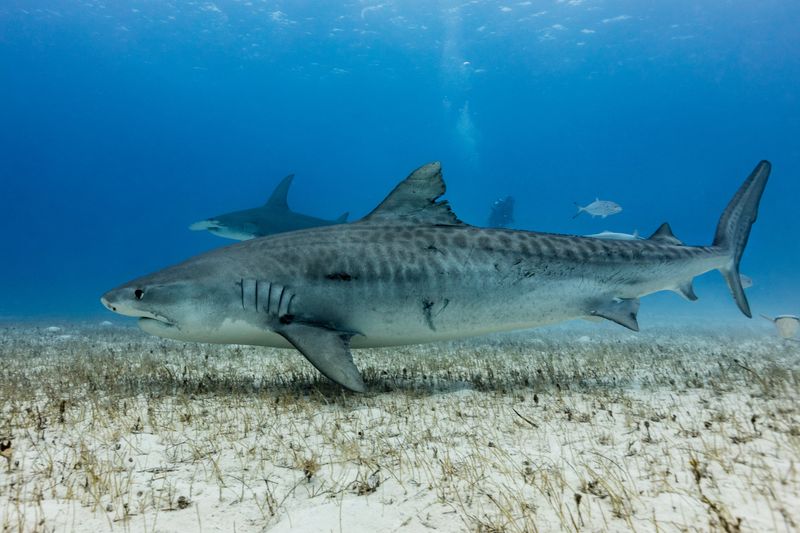
The Tiger Shark, named for its dark stripes, is an imposing predator. Known for its diverse diet, it eats almost anything, from fish to birds and even license plates.
These sharks patrol tropical and subtropical waters, often near reefs. Their keen senses make them effective hunters.
Tiger Sharks play a crucial role in marine ecosystems by controlling prey populations. Their adaptability and varied diet highlight the ocean’s complexity. They’re a testament to the intricate web of life beneath the sea, where every creature has a role.
Megalodon
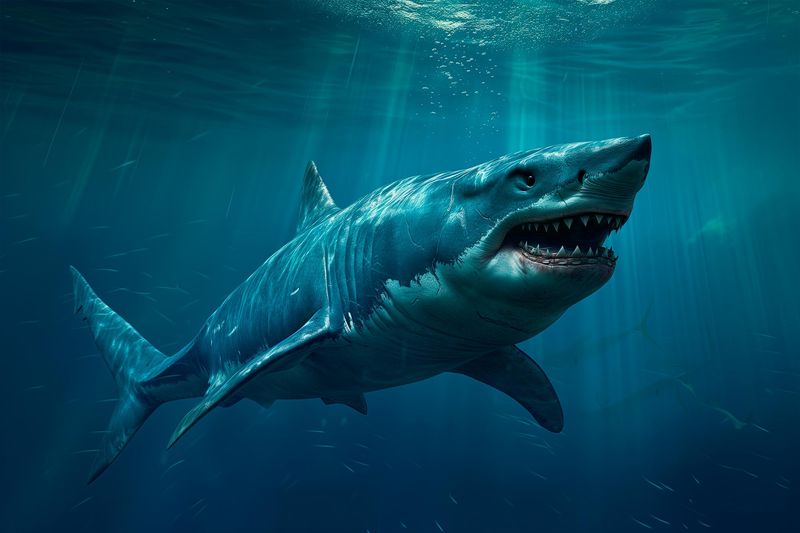
Megalodon, an extinct species of shark, once ruled the seas. Estimated to reach lengths of 50 feet or more, it was a formidable predator.
This giant fed on whales and large fish, exerting a significant influence on marine ecosystems of its time.
Fossil evidence of Megalodon’s massive teeth has sparked both scientific inquiry and popular fascination. Although it vanished around 3.6 million years ago, its legacy continues to intrigue and inspire. Megalodon represents the extremes of nature’s creativity and the ever-changing dynamics of life in the ocean.
Thresher Shark
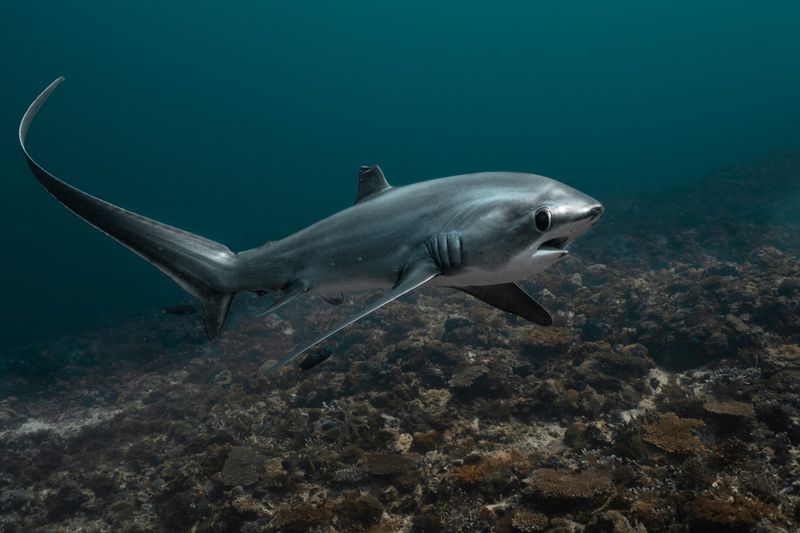
The Thresher Shark is known for its extraordinarily long tail, which it uses to stun prey. This tail can be as long as the shark’s body.
Found in tropical and temperate seas, it hunts schooling fish with agility and precision.
The Thresher’s unique hunting method showcases the innovative adaptations of ocean life. It’s a marvel of evolution, demonstrating how form and function coalesce in nature to solve the challenges of survival. These sharks are a reminder of the endless creativity found beneath the waves.
Frilled Shark
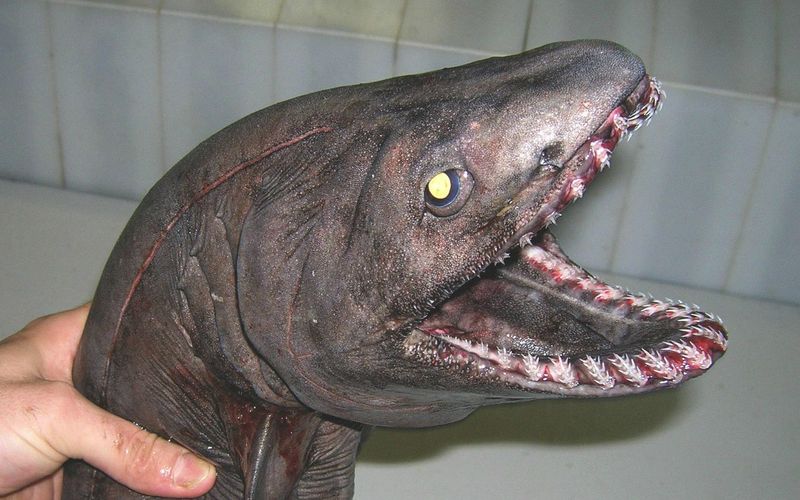
The Frilled Shark is a living fossil, unchanged for millions of years. It resides in the deep sea, with a snake-like body and frilled gills.
This elusive shark preys on squid and fish, using its flexible jaw to swallow prey whole.
Its ancient lineage offers insights into the evolutionary history of sharks. The Frilled Shark exemplifies the ocean’s ability to preserve and sustain unique, ancient life forms, a living reminder of the primordial seas that once dominated the planet.
Basking Shark
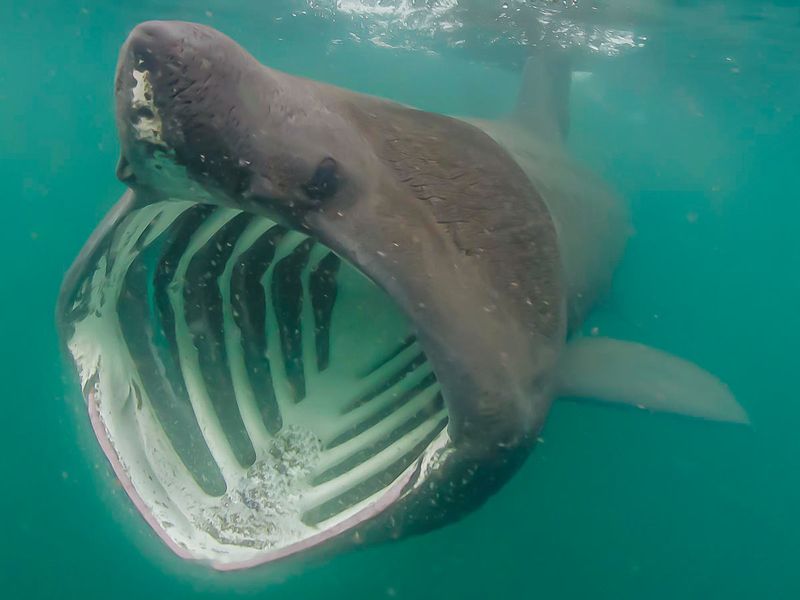
The Basking Shark is the second-largest fish in the sea, known for its enormous mouth used for filter-feeding. It consumes plankton, swimming with its mouth agape.
These gentle giants inhabit temperate oceans, often seen near the surface. Despite their size, they’re harmless to humans.
The Basking Shark’s feeding strategy is a marvel of efficiency, showcasing the ocean’s ability to sustain large life forms through small, abundant resources. They’re a testament to the intricate balance of marine ecosystems, where giants thrive on microscopic prey.
Mako Shark
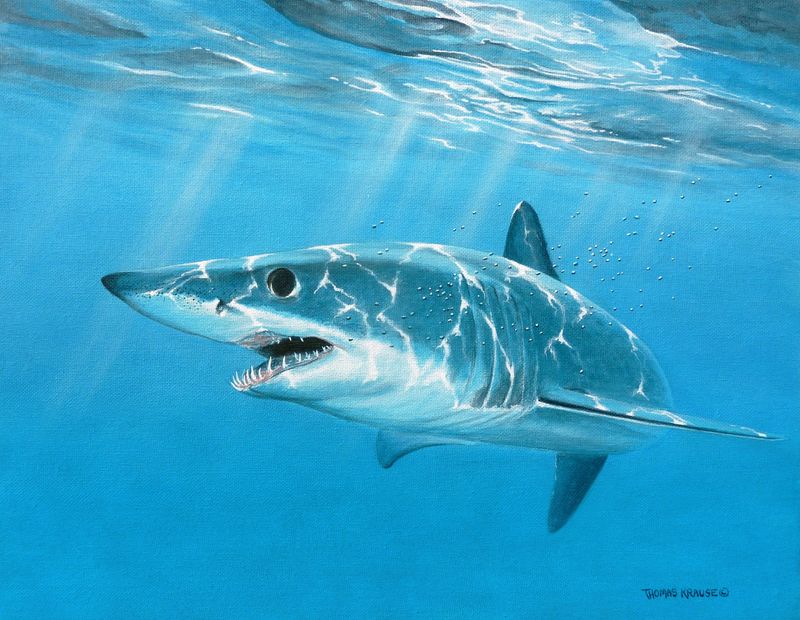
The Mako Shark, celebrated for its speed, is one of the fastest sharks, reaching speeds up to 45 mph. Sleek and agile, it is a master of the hunt.
Found in both tropical and temperate seas, its prey includes fish and cephalopods.
The Mako’s streamlined body and powerful tail are perfect adaptations for speed, demonstrating the relentless pursuit of prey in the ocean. This shark’s swiftness and efficiency in hunting make it a fascinating study in the evolution of predatory instincts.
Zebra Shark
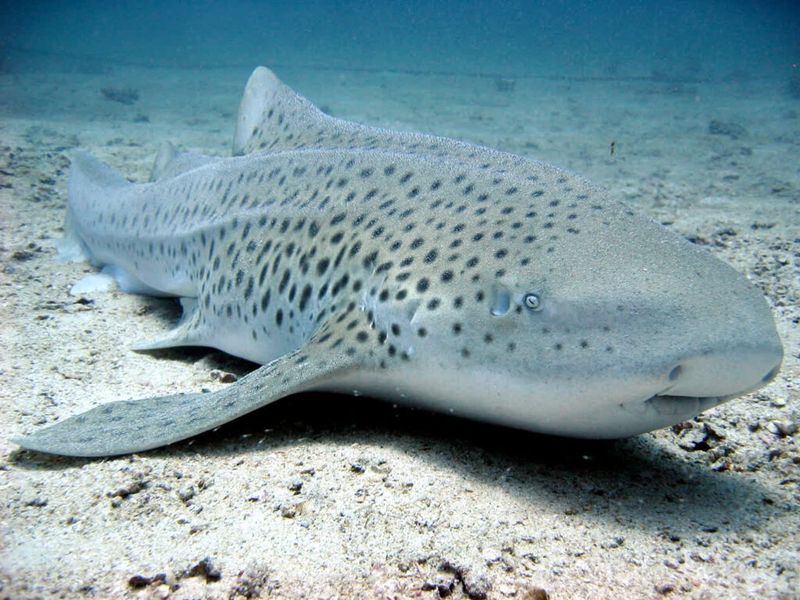
The Zebra Shark is known for its striking juvenile pattern of dark stripes, which fade into spots as it matures. Found in coral reefs, it has a nocturnal lifestyle.
It feeds on mollusks and crustaceans, using its flexible body to navigate reef crevices.
The Zebra Shark’s transformation from stripes to spots is a unique adaptation to its environment, showcasing nature’s ingenuity in camouflage and survival. It’s a living example of the diverse strategies marine life employs to thrive in complex ecosystems.
Greenland Shark
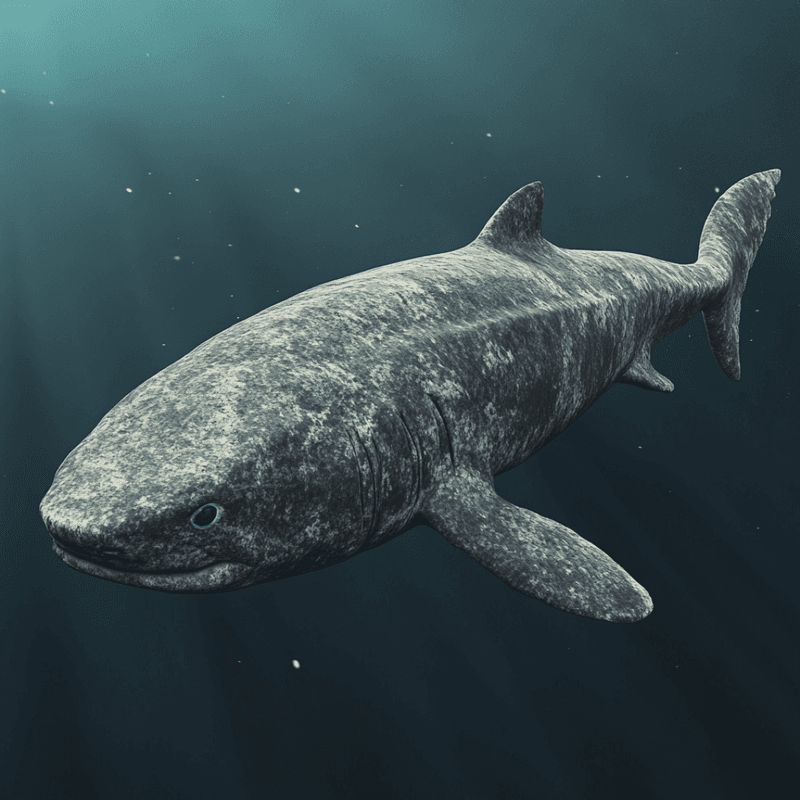
The Greenland Shark, residing in icy Arctic waters, is one of the longest-lived vertebrates, with lifespans exceeding 400 years. Slow-moving, it feeds on fish and carrion.
These sharks are adapted to cold, deep waters, showcasing longevity and resilience.
Their ability to endure harsh environments offers valuable insights into aging and survival strategies. The Greenland Shark is a testament to the mysteries of oceanic life, where age and wisdom coexist in the silent, frigid depths.
Nurse Shark
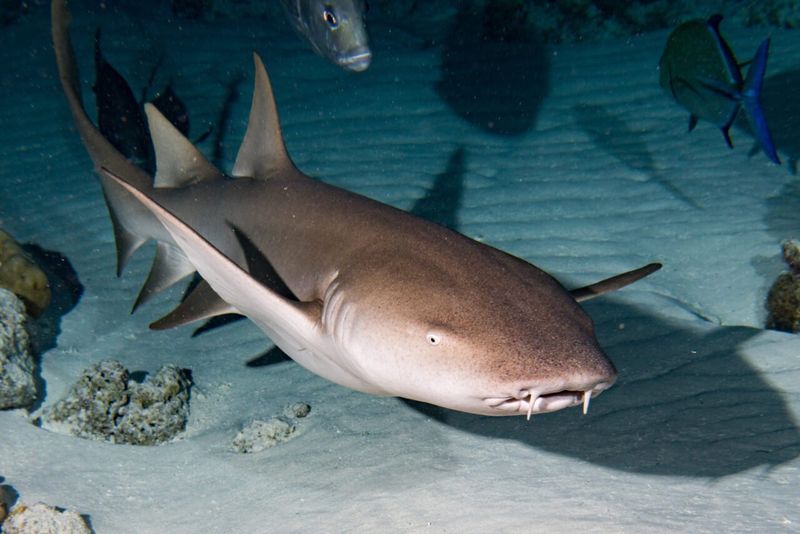
The Nurse Shark is a bottom-dweller, often found resting on the ocean floor during the day. Recognizable by its barbels, it hunts nocturnally.
Feeding on small fish and invertebrates, it uses suction to capture prey.
The Nurse Shark’s lifestyle exemplifies the diverse niches occupied by marine life. Its behavior and adaptations are a testament to the variety of survival strategies in the ocean, showcasing the intricate balance between predator and prey in underwater ecosystems.
Sand Tiger Shark
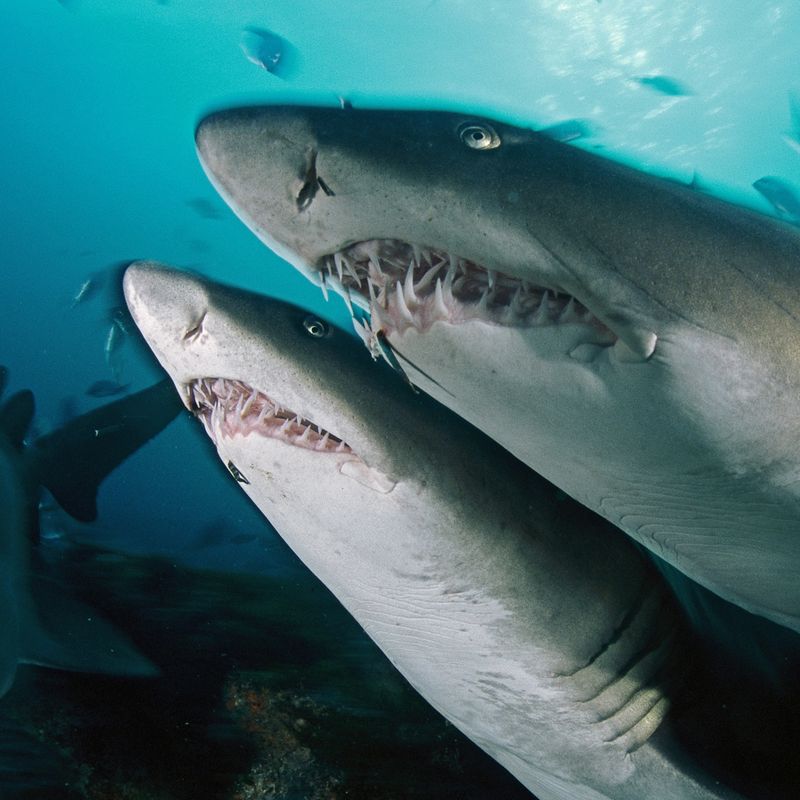
The Sand Tiger Shark, with its ragged teeth, often appears menacing but is relatively docile. Found near shipwrecks and reefs, it hunts at night.
Its diet includes bony fish and small sharks. Despite its fearsome appearance, it poses little threat to humans.
The Sand Tiger’s preference for murky environments highlights the adaptability of sharks to various habitats. Its conservation status reminds us of the importance of protecting marine life to preserve the ocean’s rich biodiversity for future generations.
Wobbegong Shark
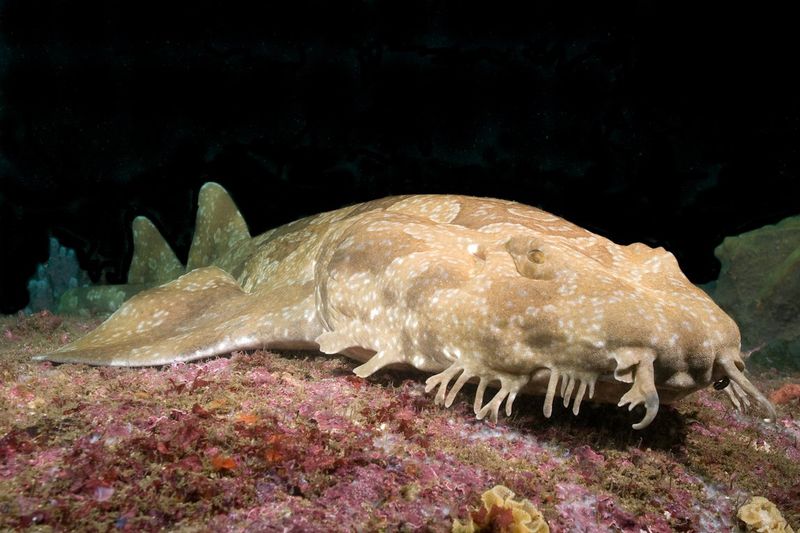
The Wobbegong Shark, known for its ornate pattern, is a master of camouflage. Found in the waters around Australia and Indonesia, it lies in wait for prey.
Using its cryptic appearance, it ambushes fish and crustaceans.
The Wobbegong’s ability to blend seamlessly into its environment is a fascinating example of evolutionary adaptation. It’s a reminder of the creative solutions nature employs to ensure survival in the competitive world beneath the waves.
Blue Shark
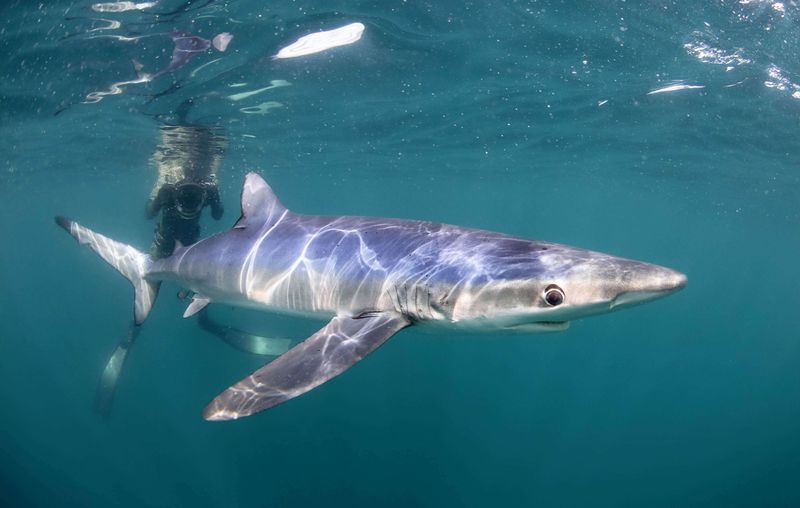
The Blue Shark, with its slender body and striking blue hue, is a migratory predator. Found in temperate and tropical oceans, it travels vast distances.
Feeding on squid and fish, it forms schools during migration.
The Blue Shark’s vibrant color and migratory behavior highlight the dynamic, interconnected nature of ocean life. Its adaptation to long-distance travel showcases the complex relationships within marine ecosystems, where movement and survival are intricately linked.
Port Jackson Shark
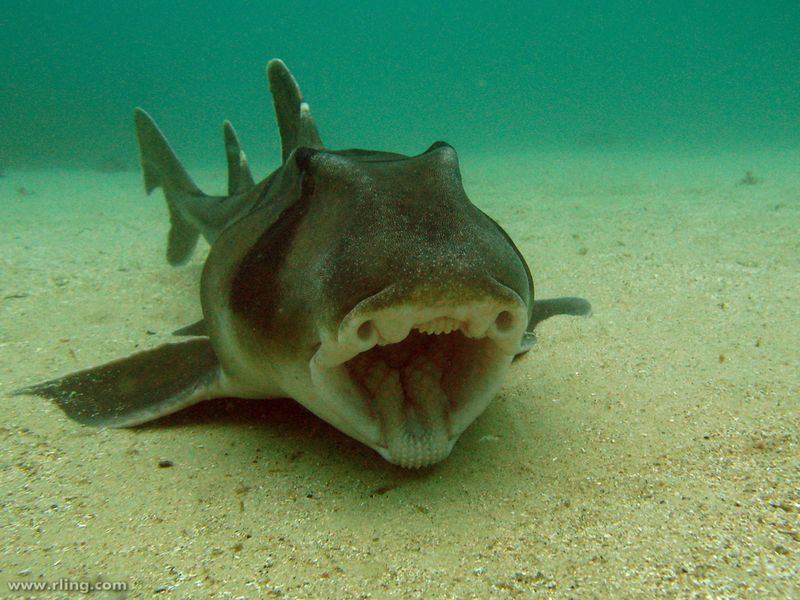
The Port Jackson Shark, named for its distinctive head shape, is a bottom-dweller found in Australian waters. It feeds on mollusks and sea urchins.
Known for its spiral egg cases, it lays in crevices to protect its young.
This shark’s reproductive strategy and unique appearance reflect the diverse evolutionary paths taken by ocean life. Its presence in coastal waters enriches our understanding of the varied habitats and behaviors of marine creatures, highlighting the adaptability of life under the sea.
Sawshark
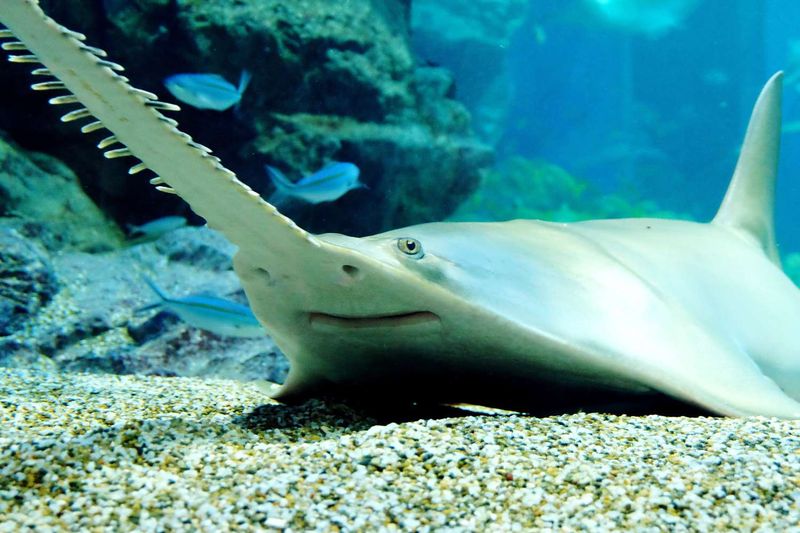
The Sawshark, characterized by its elongated snout lined with teeth, is an intriguing predator. Found in coastal waters, it uses its saw-like snout to slash and capture prey.
Its diet includes small fish and crustaceans. This unique hunting tool is a marvel of adaptation.
The Sawshark’s specialized snout exemplifies nature’s inventive approaches to survival. It’s a fascinating study in how form and function evolve together in the ocean, creating the diverse array of life that thrives beneath the waves.
Angel Shark
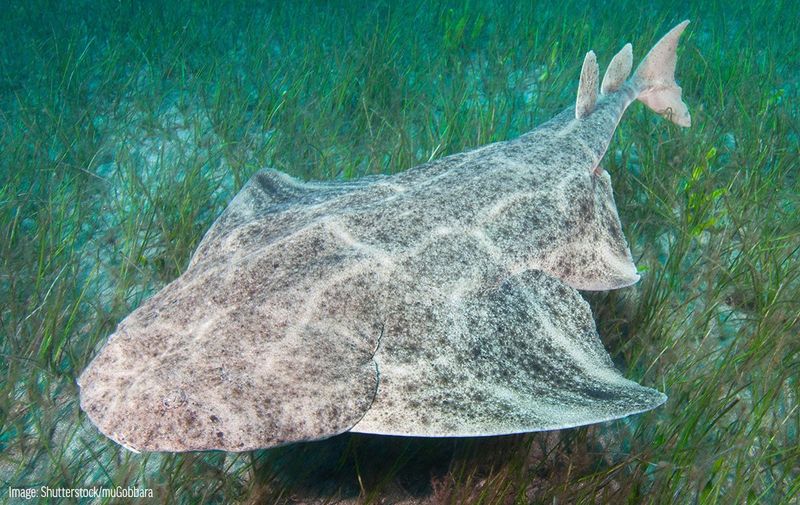
The Angel Shark combines the appearance of both sharks and rays, with its flat body adapted for life on the ocean floor. Found in temperate waters, it ambushes prey from beneath the sand.
Its diet includes fish and invertebrates. This shark’s ability to blend with the ocean floor highlights the intricate strategies used by predators.
The Angel Shark is a remarkable example of evolutionary convergence, where different species evolve similar traits to adapt to their environments, enriching the tapestry of oceanic life.
Cookiecutter Shark
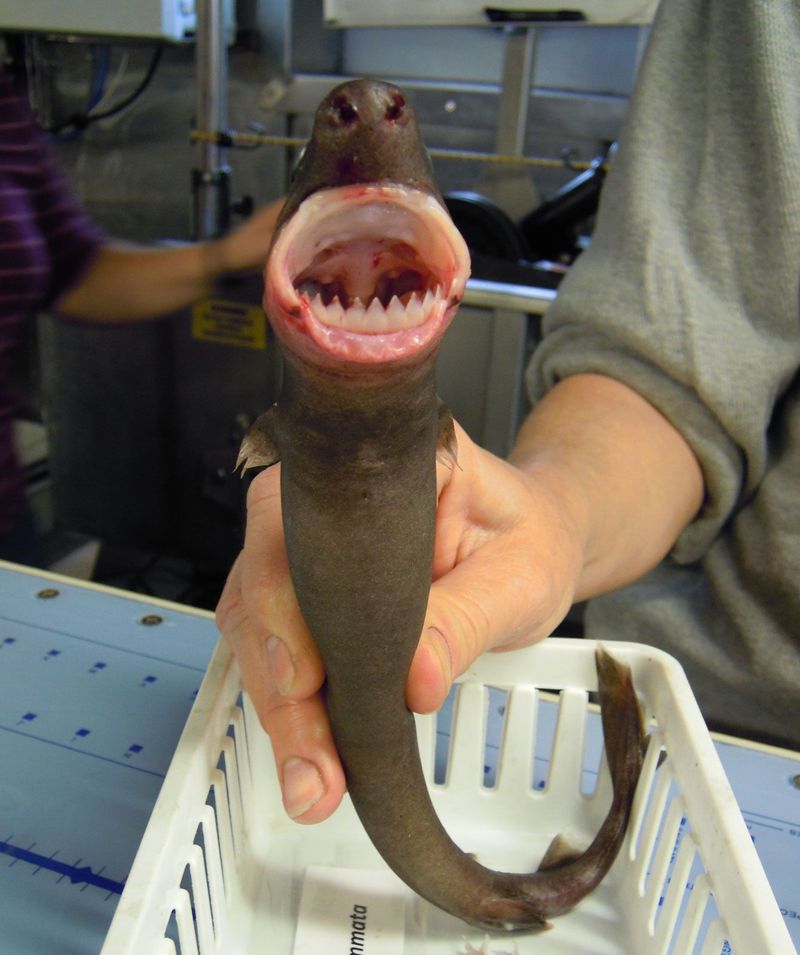
The Cookiecutter Shark, small but formidable, is known for its unique feeding method. It takes circular bites from larger marine animals, leaving distinctive wounds.
Found in deep ocean waters, it feeds on large fish and marine mammals. Despite its size, it’s a noteworthy predator.
The Cookiecutter Shark’s unusual feeding strategy showcases the diverse ways in which ocean life adapts to ecological niches. It’s a reminder of the ocean’s vast, unexplored potential and the creative survival tactics employed by its inhabitants.
Blacktip Reef Shark
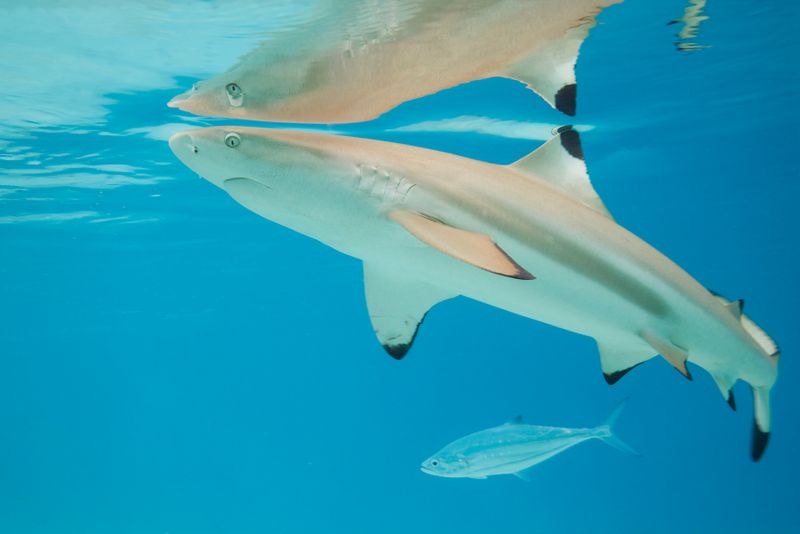
The Blacktip Reef Shark is a common sight in coral reefs, known for its distinctive black-tipped fins. Agile and curious, it navigates shallow waters with ease.
Feeding on fish and squid, it’s an essential part of the reef ecosystem.
The Blacktip’s role in its habitat underscores the interconnectedness of marine life, where each species contributes to the health of the reef. Its presence is a vital indicator of the ecosystem’s balance, reminding us of the intricate web of life that thrives in coral environments.
Lemon Shark
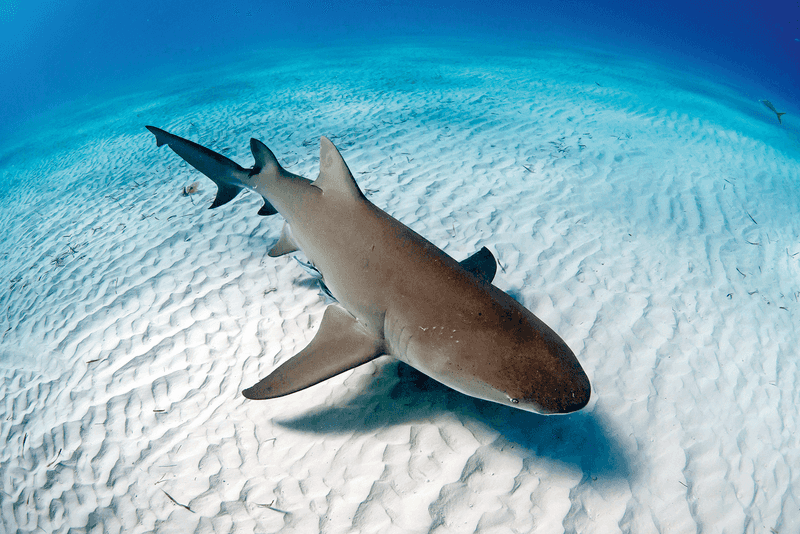
The Lemon Shark, named for its yellowish hue, is often found in mangroves and shallow waters. Its skin color provides excellent camouflage.
Feeding on fish and crustaceans, it uses the mangroves for protection and hunting.
The Lemon Shark’s adaptation to its environment is a testament to the complex relationships within ecosystems, where camouflage and habitat play critical roles in survival. It’s a vivid example of how nature tailors life to thrive in specific environments, highlighting the diversity of marine strategies.
Bull Shark
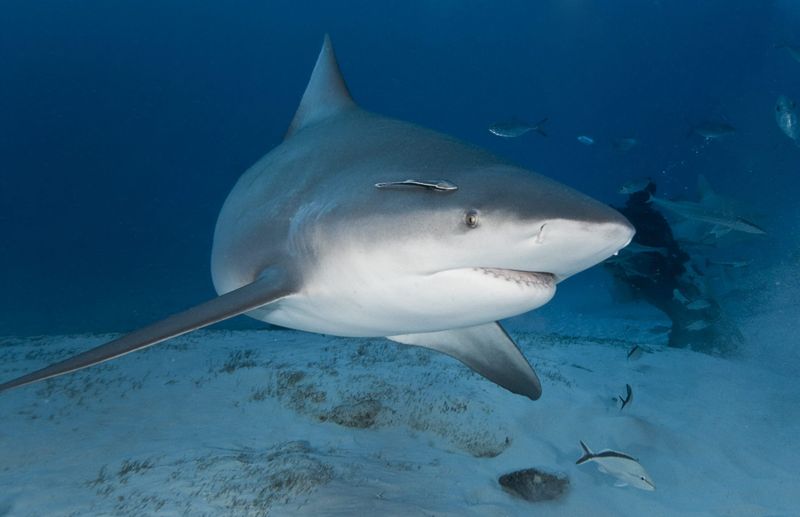
The Bull Shark is notable for its ability to thrive in both salt and freshwater. Found in rivers and coastal areas, it’s a versatile predator.
Its diet includes fish, dolphins, and even terrestrial mammals. This adaptability allows it to exploit various environments.
The Bull Shark’s presence in diverse habitats showcases the fluid boundaries of ocean and river ecosystems. It’s a powerful reminder of the adaptability and resilience of marine life, where survival often means crossing traditional ecological borders.
Caribbean Reef Shark
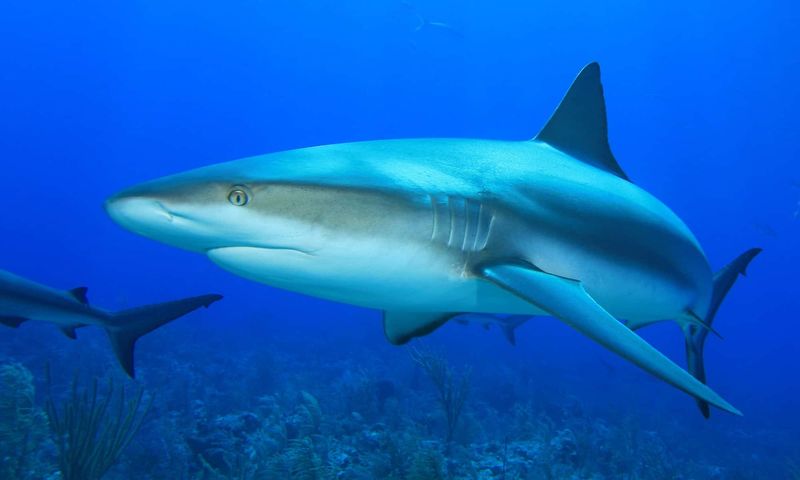
The Caribbean Reef Shark is a prominent predator in the coral reefs of the Caribbean Sea. Known for its sleek body and inquisitive nature, it is a masterful hunter.
Feeding on fish, squid, and octopuses, it plays a crucial role in maintaining the health of the reef.
The Caribbean Reef Shark’s interactions with its environment highlight the delicate balance of coral ecosystems, where predators and prey constantly shape each other’s existence. Its presence is crucial for the vibrancy and sustainability of reef life.
Pyjama Shark
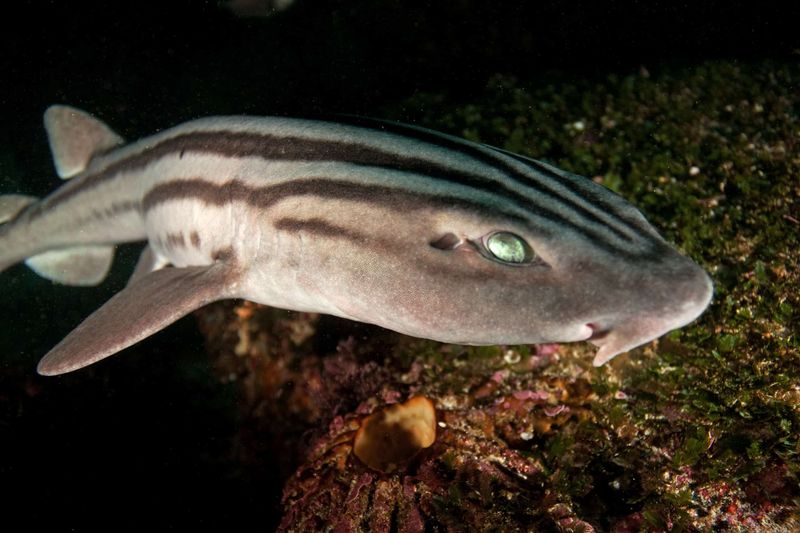
The Pyjama Shark, adorned with dark, vertical stripes, resembles a set of pajamas, earning its charming name. Found in South African waters, it adds a playful element to the ocean’s mysteries.
This shark is nocturnal, coming to life at night to hunt for small fish and invertebrates. Its behavior offers insights into the diverse adaptations of ocean life.
The Pyjama Shark’s nocturnal habits and striking appearance make it a standout creature, captivating the imagination of marine enthusiasts.

